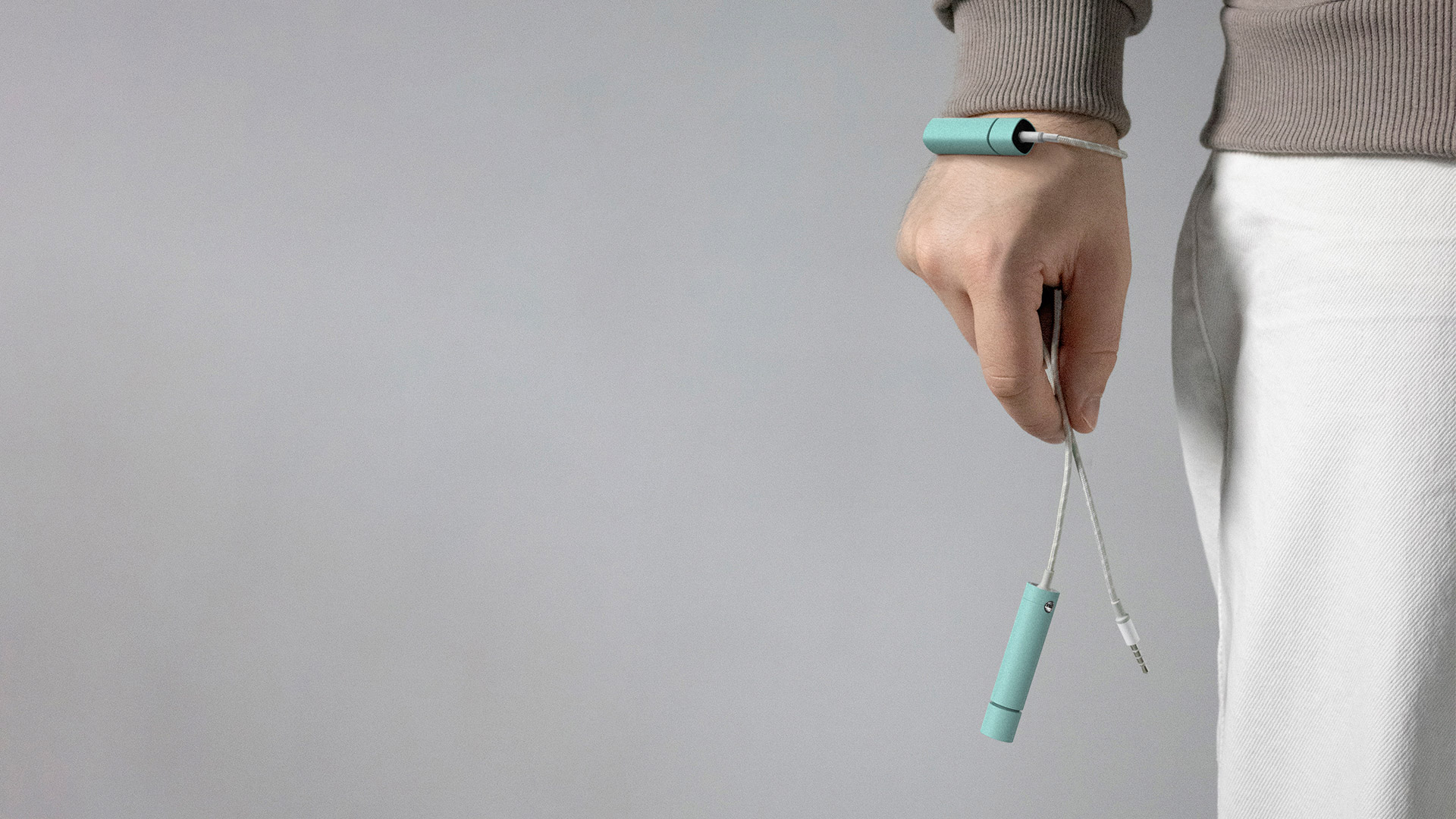
PROJECT DETAILS
A non-medical, assistive device that provides all the benefits of a cane with none of the stigma.
AWARDS
INDUSTART
FAST CO. INNOVATION BY DESIGN
JAMES DYSON FOUNDATION
Being told that you have a lifelong, incurable, eyesight problem is a terrifying prospect; one that is very difficult to come to terms with. For the visually impaired, retaining independence in day-to-day life is important. However, navigation can be a long-winded, potentially unsafe process, especially in new environments or at night.
Maptic is a system of wearable sensory devices for the visually impaired, consisting of a visual sensor and vibrating feedback units. These customisable, personalisable modules can be worn without attracting the stigma that current assistive products harbour, while still accurately detecting objects in the visual field and transmitting them into intuitive vibrations on the body.
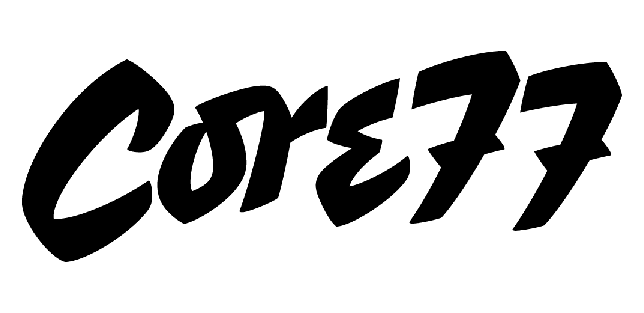
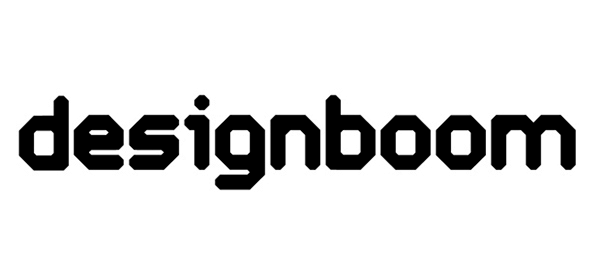
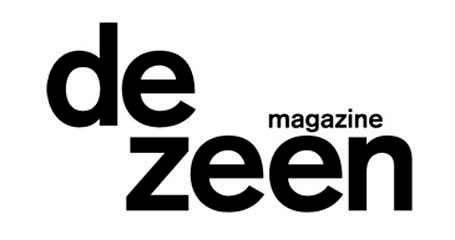

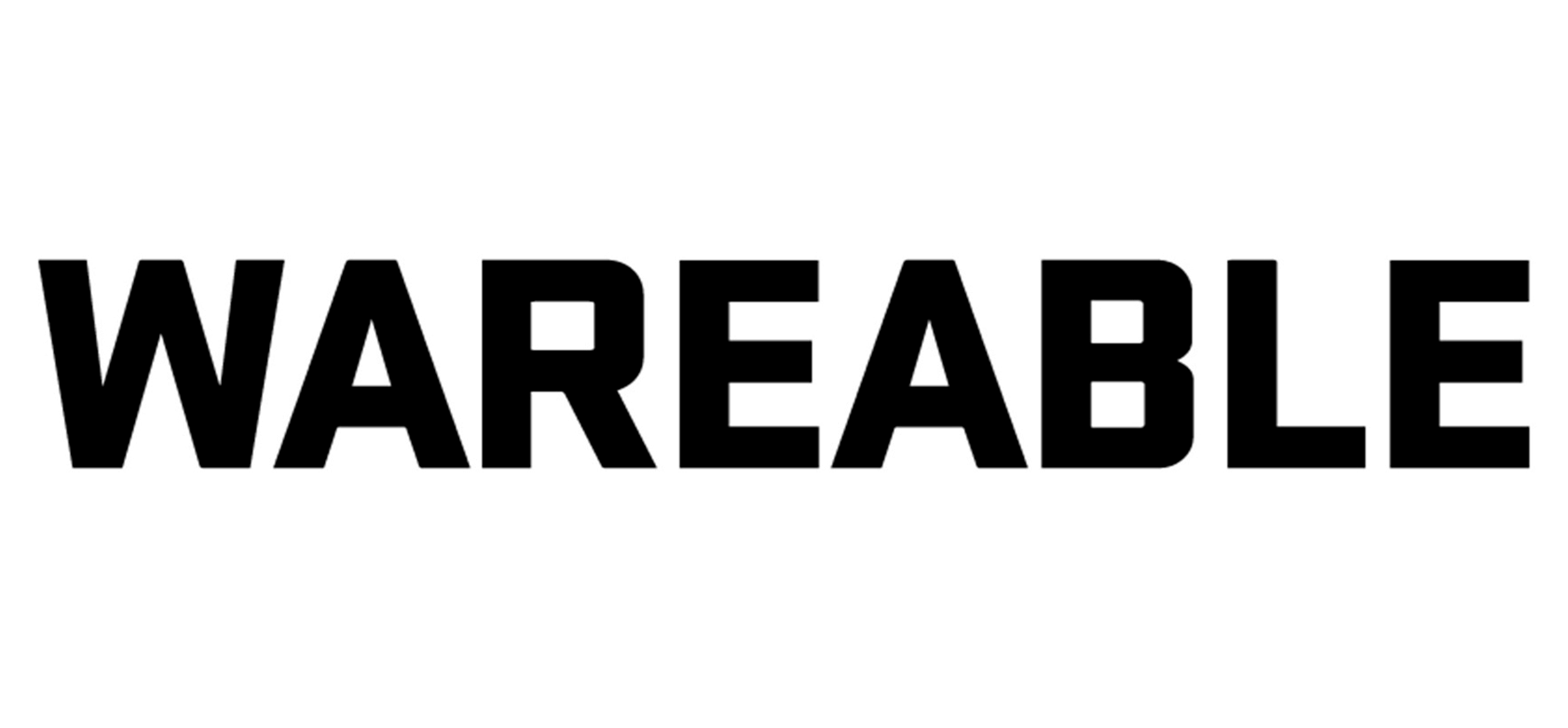
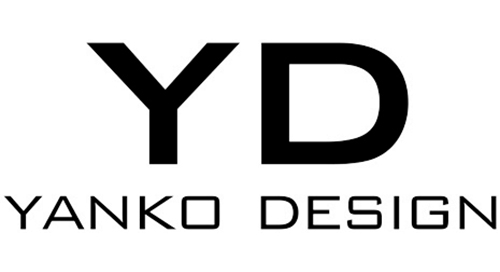
Hazard awareness
Guide cane alternative
Hazard awareness
Guide cane alternative
Maptic is an alternative or addition to traditional blind devices. It utilises LIDAR sensors and GPS to provide a cohesive navigation system, directing visually impaired users from point A to B, but also invisibly providing hazard awareness above the knee, something that guide canes are unable to do.
Maptic utilises LIDAR sensors and GPS to provide a cohesive navigation system, directing visually impaired users from point A to B, but also invisibly providing hazard awareness above the knee, something that guide canes are unable to do.
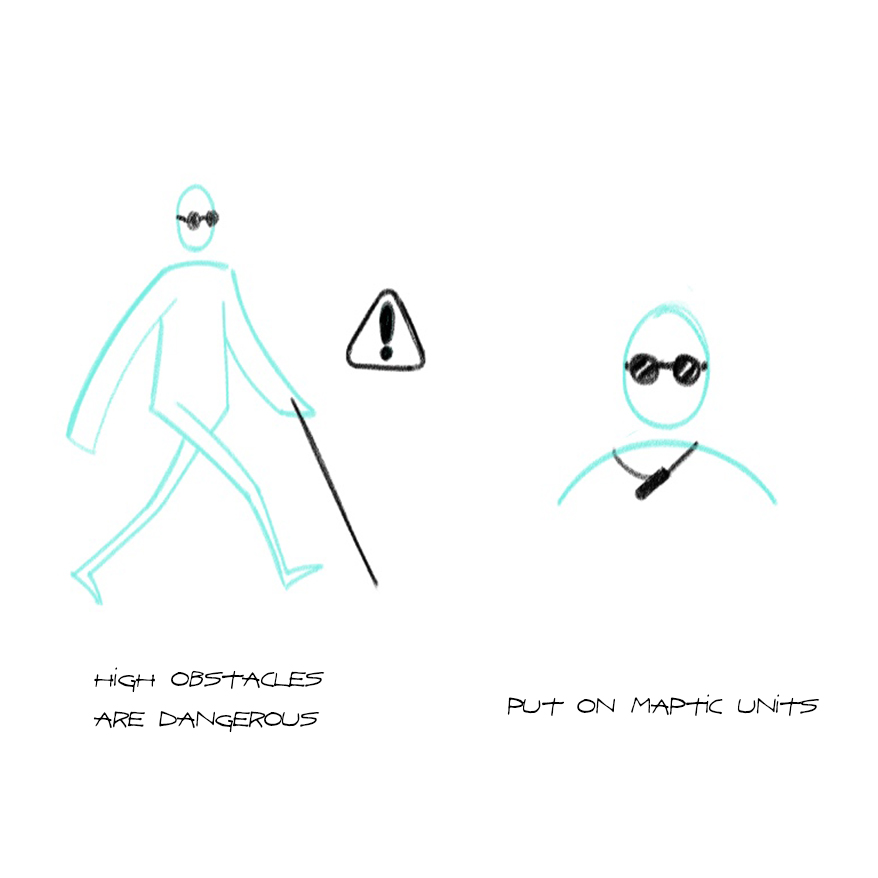
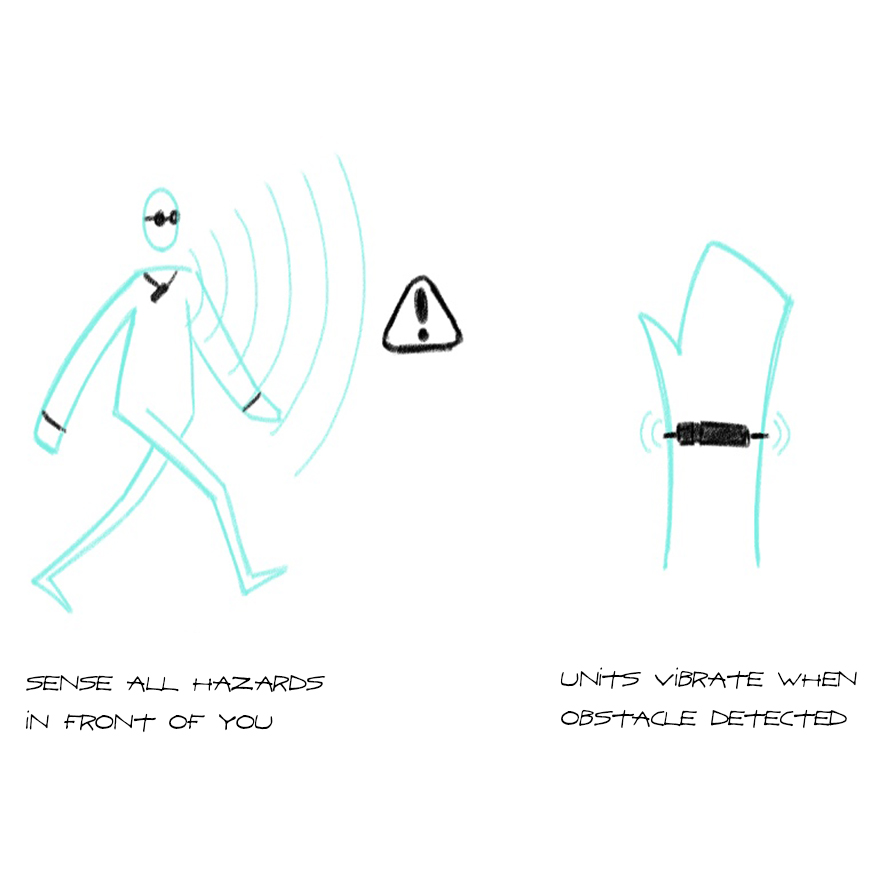
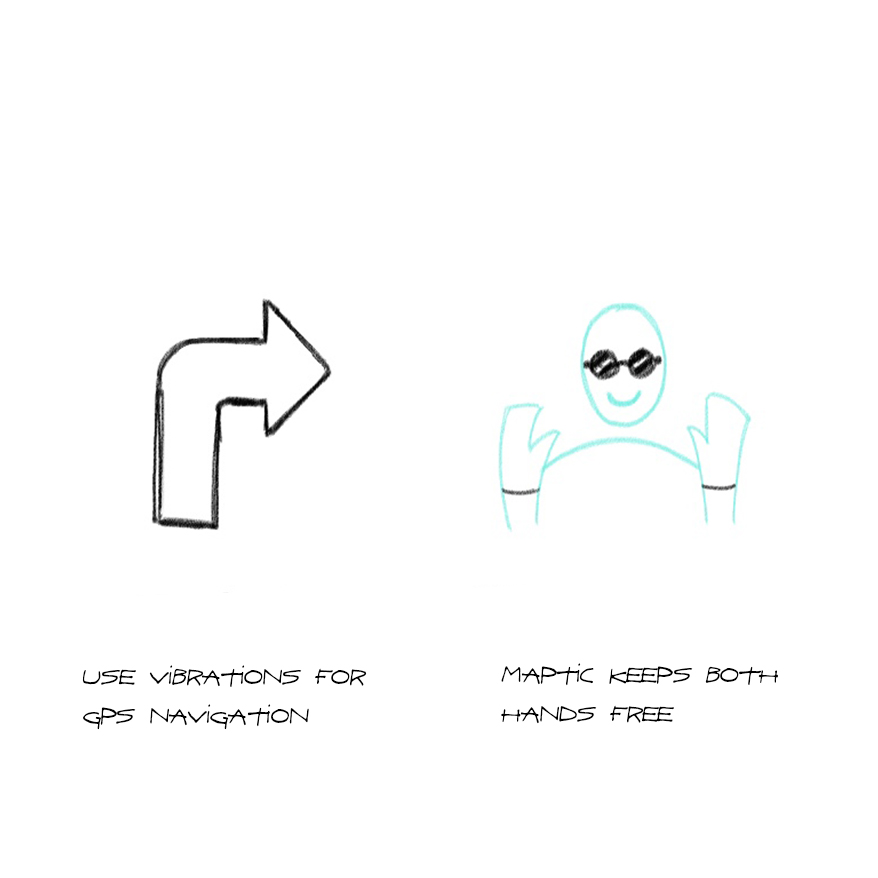


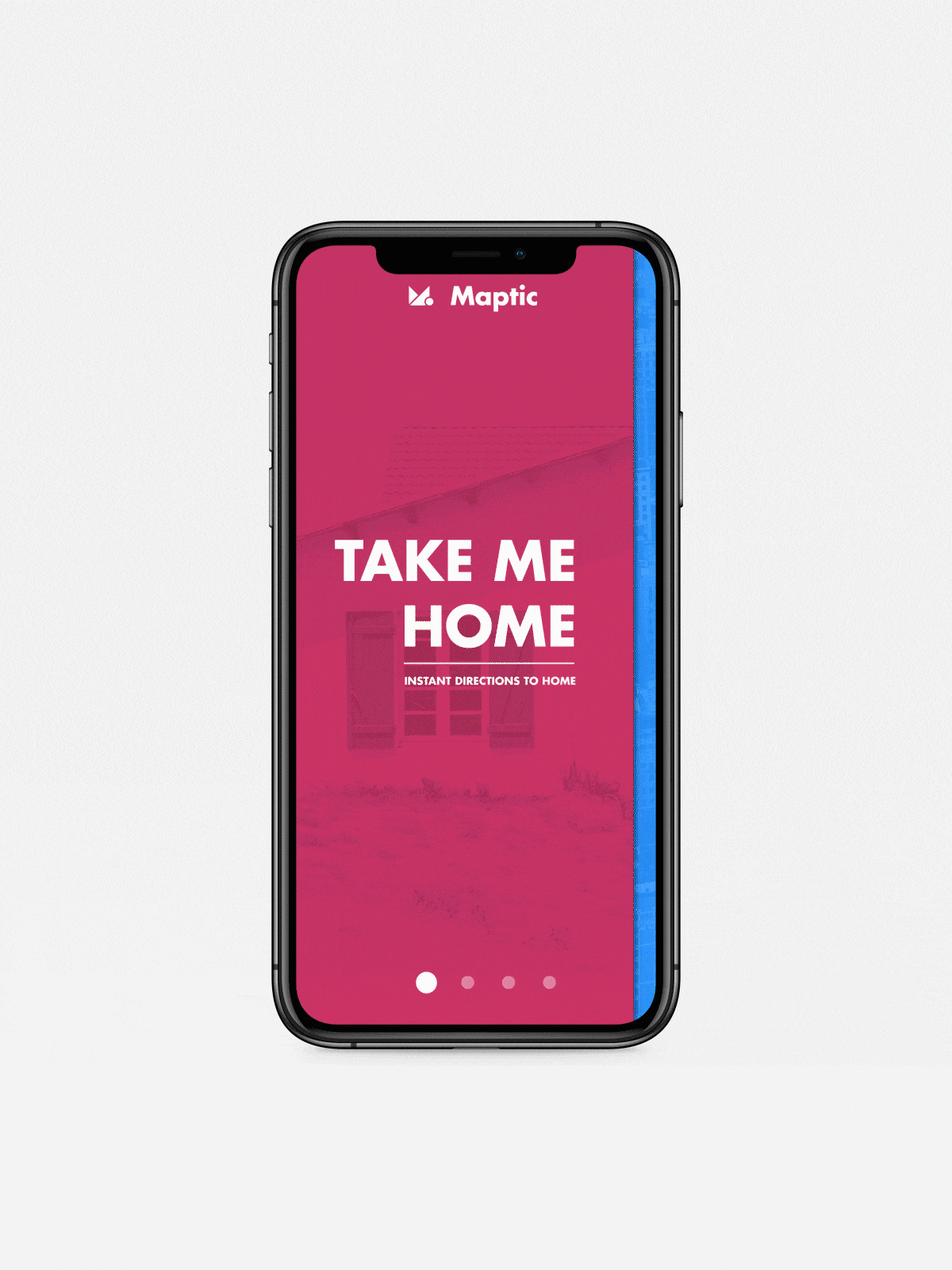
The problem
A big, unseen issue
For the visually impaired, retaining independence in day-to-day life is important. However, navigation can be a long-winded, potentially unsafe process, especially in new environments or at night.
Simple tasks like travelling to work can become arduous and time-consuming and more often than not, need planning beforehand.
2m
2 million (1 in 28 people) live with sight loss in the UK.
18%
Are legally blind, 82% have partial eyesight.
30%
of all VI devices used are abandoned.
Visually impaired people don't want typically medical-looking products.
Hearing is the dominant sense, so must be left fully unobstructed.
Guide canes don't detect hazards or obstacles above the knee area.

Existing products
Discovering stigma
Hearing becomes the dominant sense for detecting immediate dangers and unfortunately, most current devices utilise purely audio-based feedback for operation, along with looking overly medical in appearance.
Pain points
Task analysis
A journey map of daily life for visually impaired users was undertaken in order to understand frustrations and emotions at each step. Insights were grouped together into common and recurring sections. A key problem of safety was discovered, where partially sighted people felt that they became a target for violence, especially while holding or interacting with a phone and guide cane.
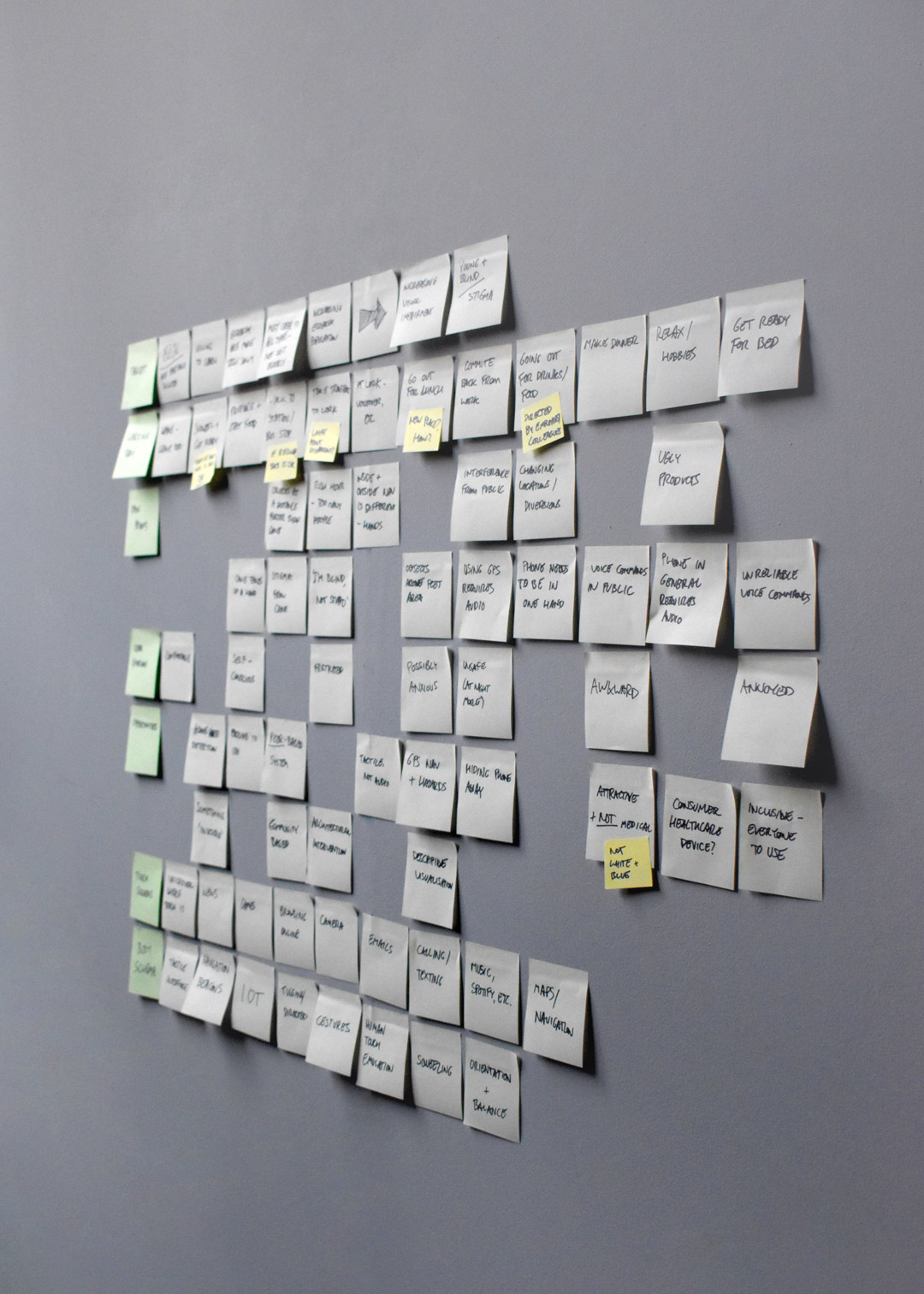
THE TASK
How can we design a method of empowering the basics of daily life for the visually impaired?
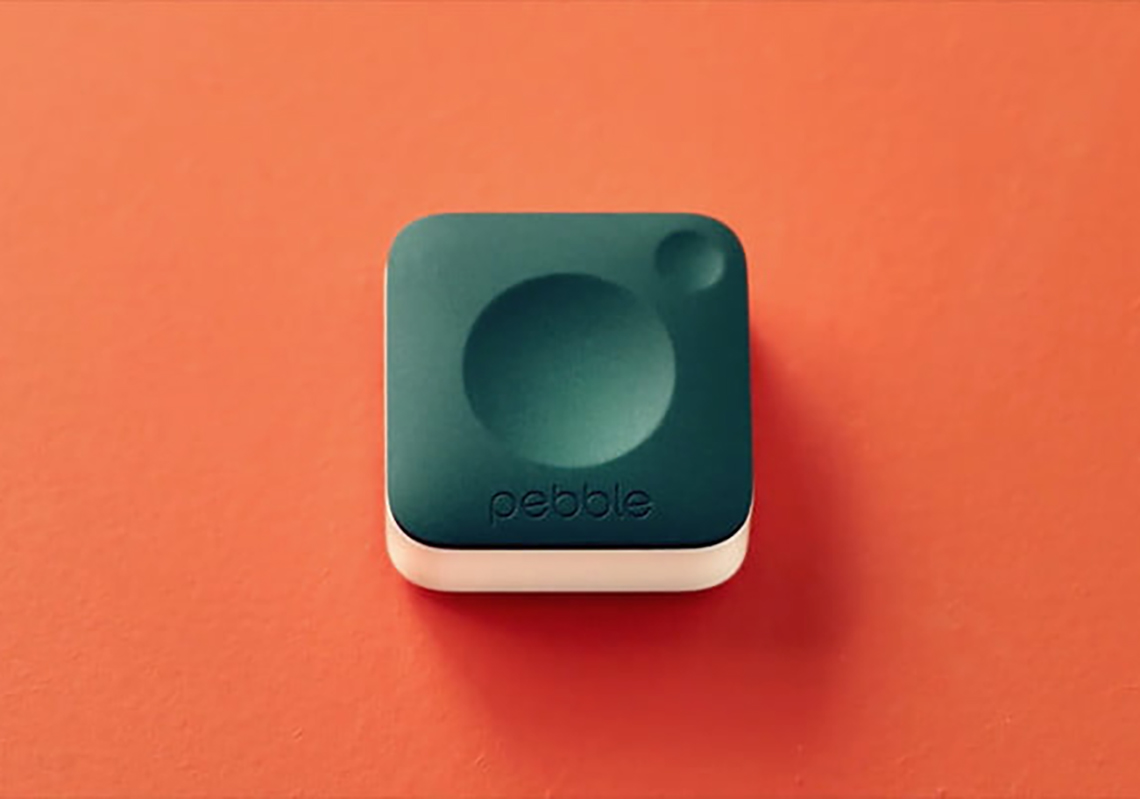
Moodboard
CMF & form
Investigating more considered and minimal forms, with smooth, tactilely beautiful finishes. Also looking into products with concealed and integrated interaction touchpoints, and a more natural physical interface.
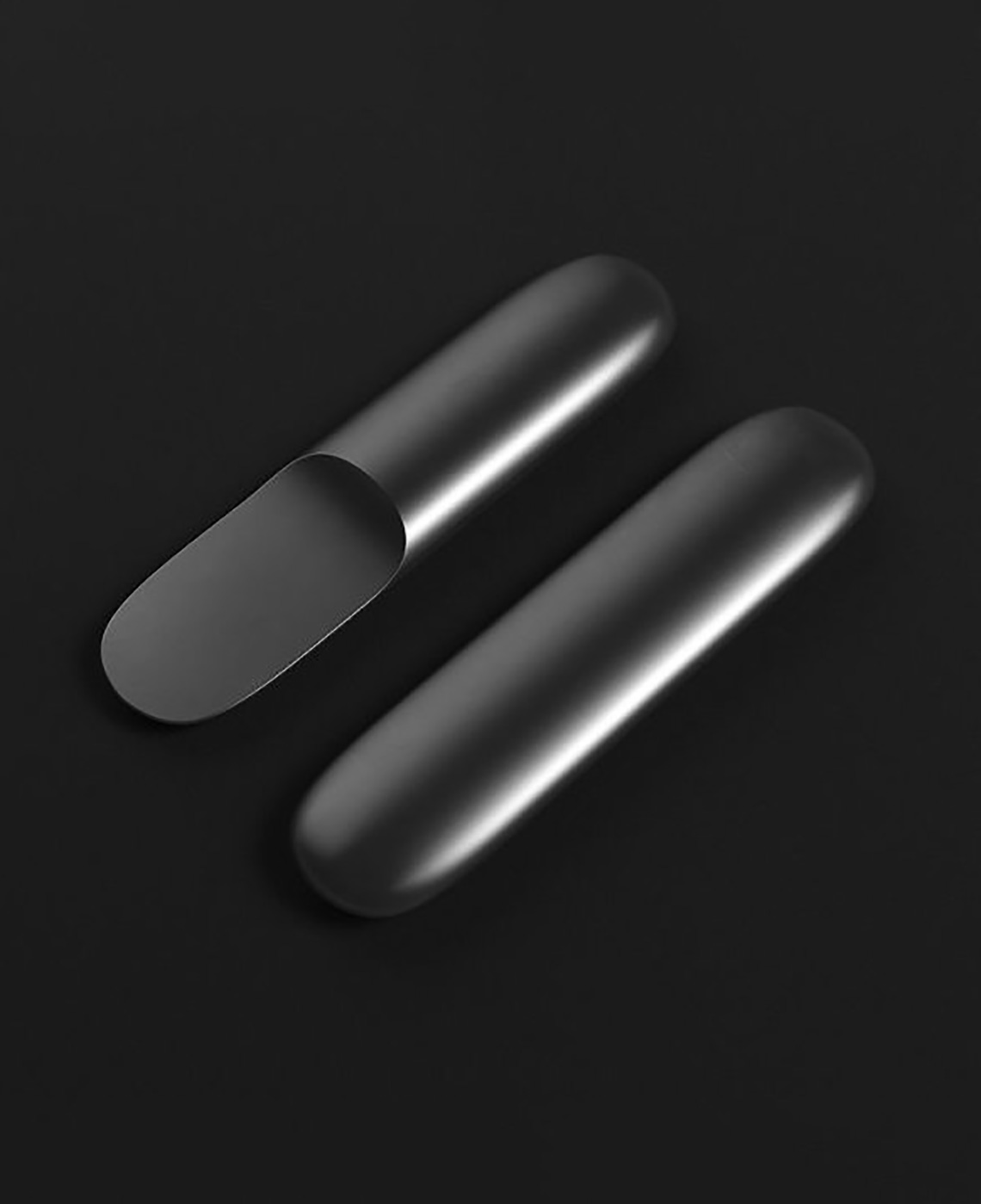
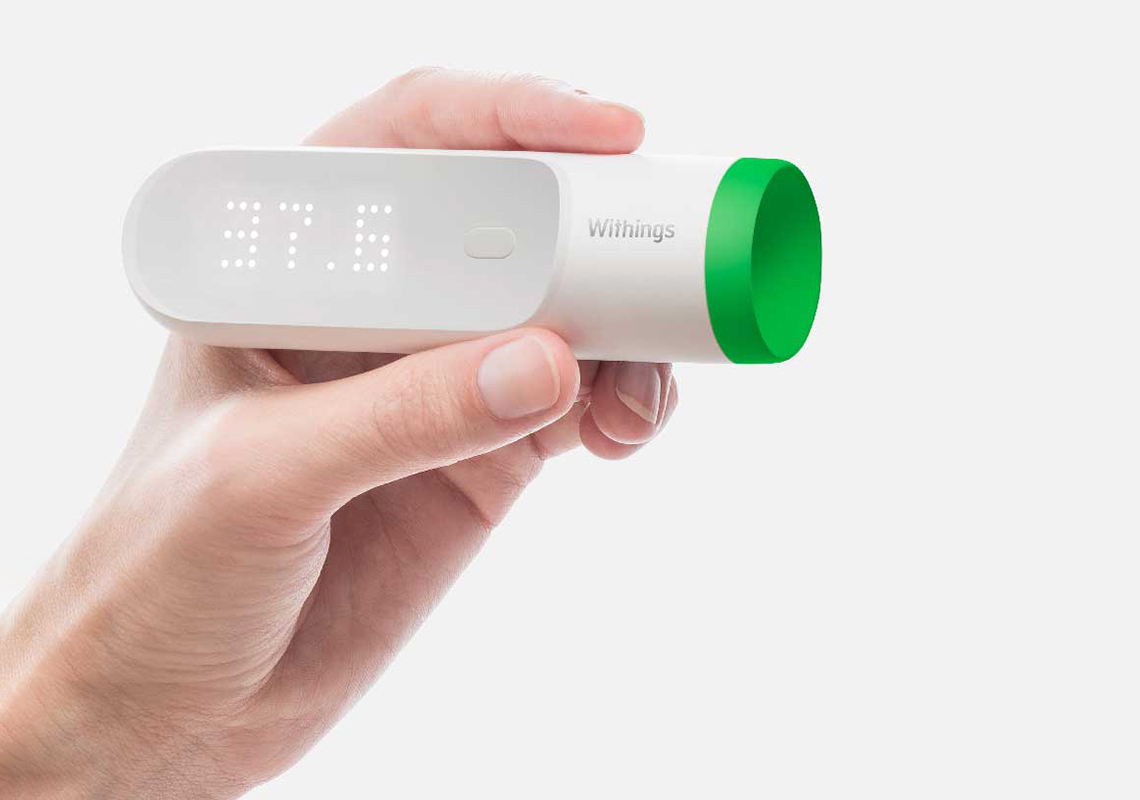
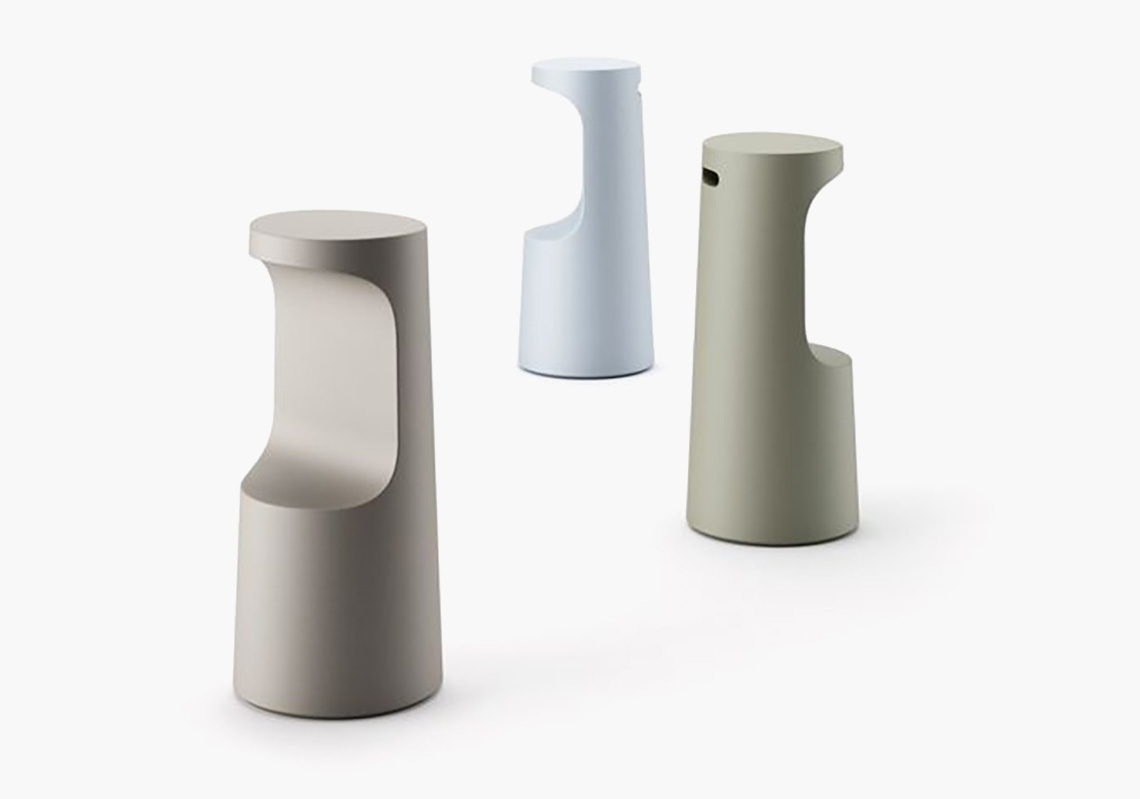
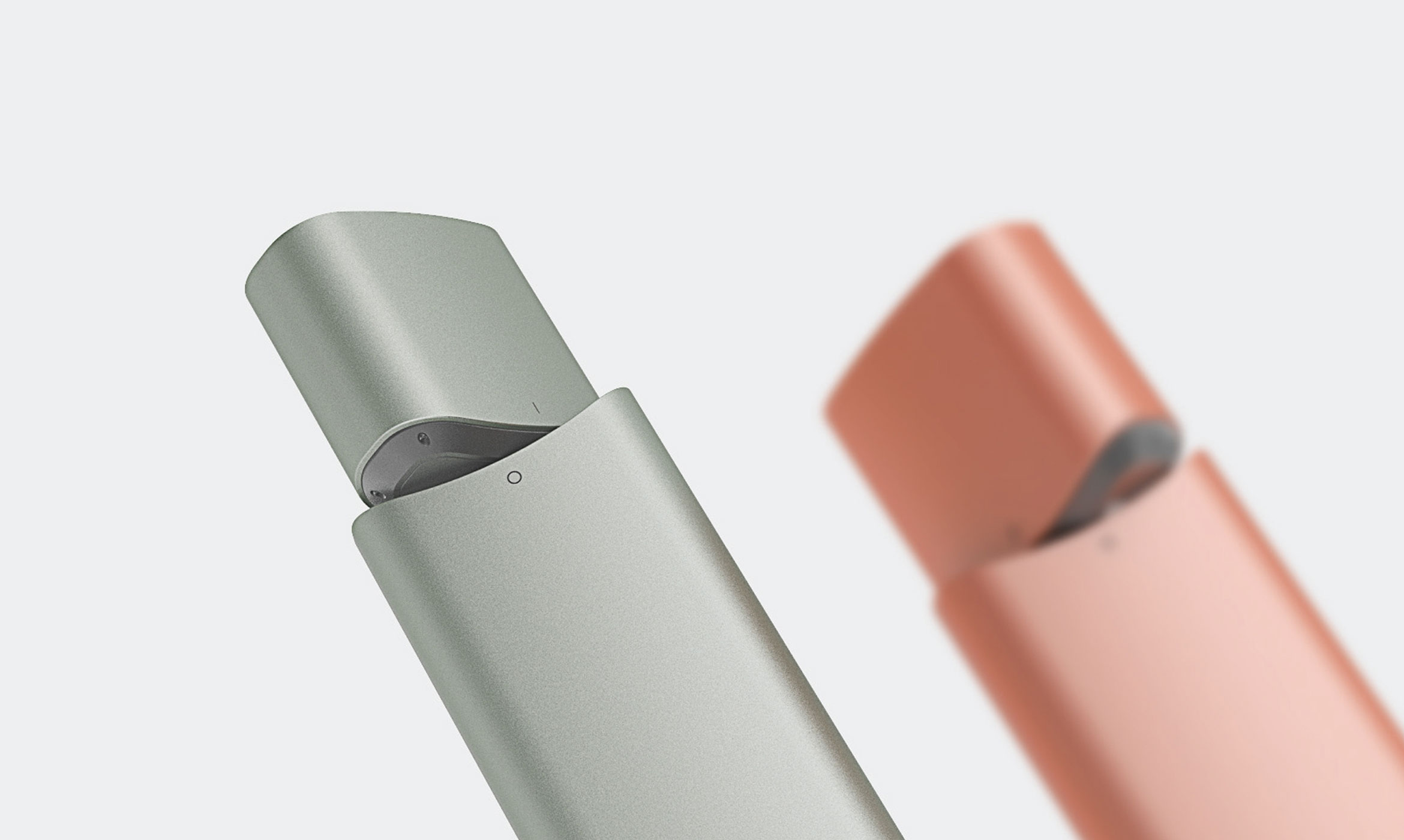

Prototyping
Experience & function
The form of the device would be largely dictated by the type of sensors and feedback units used, so prototyping was undertaken using many different sensors and forms of feedback to test accurate and reliable tactile responses and sensor data. From that, the next step was physical development including testing intuitive forms for visually impaired people to discern by touch, with a non-medical appearance.
The form of the device would be largely dictated by the type of sensors and feedback units used, so prototyping was undertaken using many different sensors and forms of feedback to test accurate and reliable tactile responses and sensor data. From that, the next step was physical development including testing intuitive forms for visually impaired people to discern by touch, with a non-medical appearance.

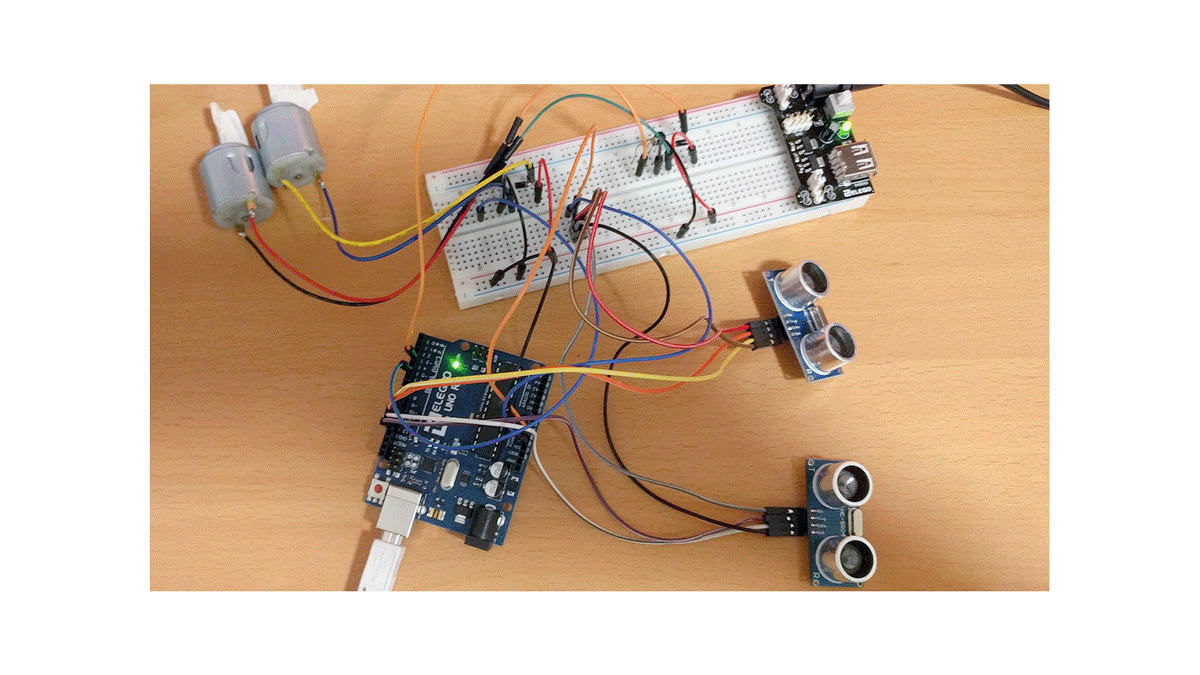
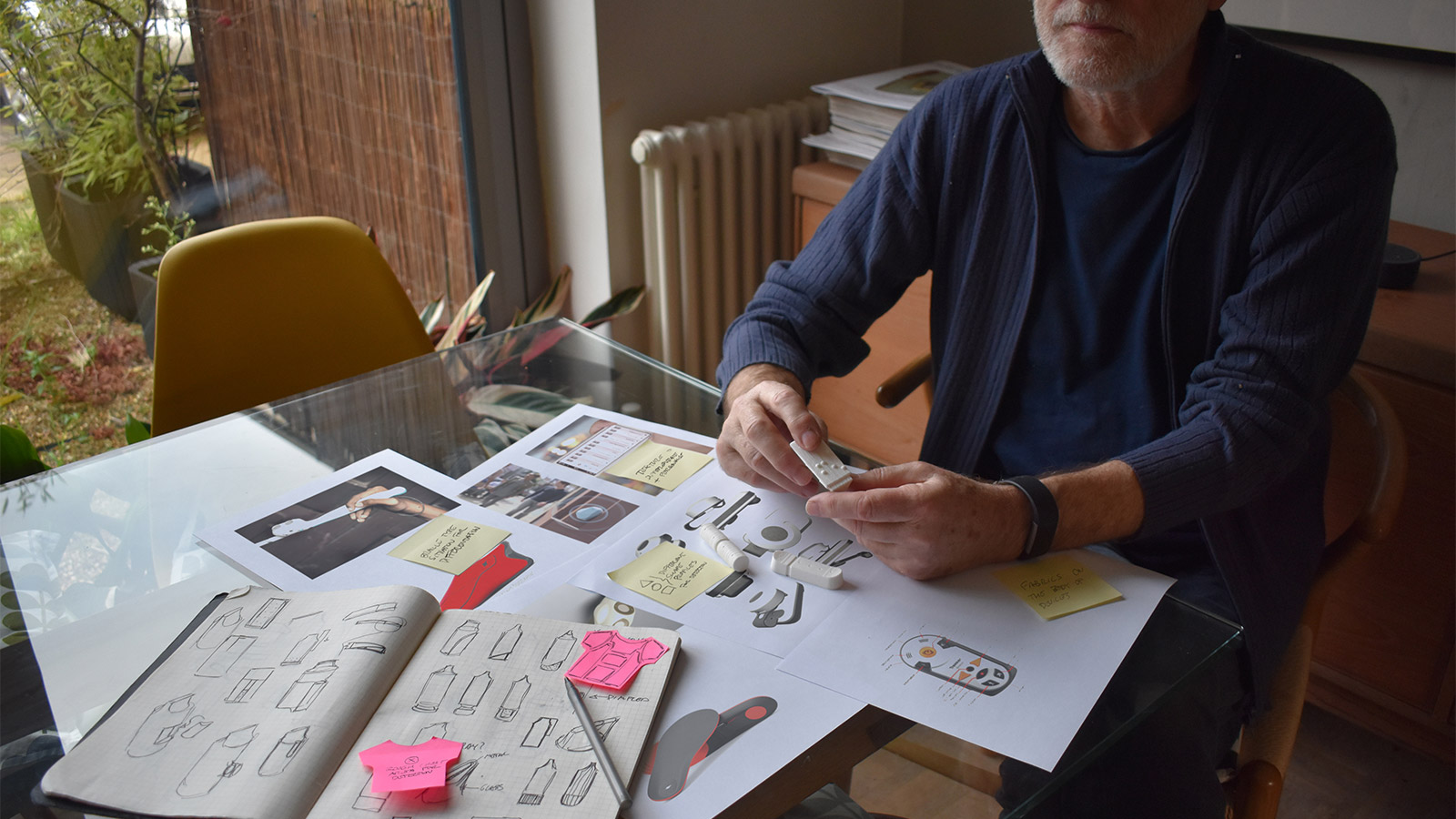
Maptic units
1:1 scale models
The project ended up as a series of wearable units, consisting of a central sensor unit worn on the chest, and feedback units worn on the left and right sides of the body. All interactions with the units have been taken with touch into consideration. At any given point, by running a finger down the device, the user can detect the state of the system, whether it's on or off, indoors or outdoors setting, or which orientation the sensor is. Different profiles were given to the sensor (circle), left (square) and right (triangle) units, for the user to immediately tell what they're touching.
The project ended up as a series of wearable units, consisting of a central sensor unit worn on the chest, and feedback units worn on the left and right sides of the body. All interactions with the units have been taken with touch into consideration. At any given point, by running a finger down the device, the user can detect the state of the system, whether it's on or off, indoors or outdoors setting, or which orientation the sensor is. Different profiles were given to the sensor (circle), left (square) and right (triangle) units, for the user to immediately tell what they're touching.

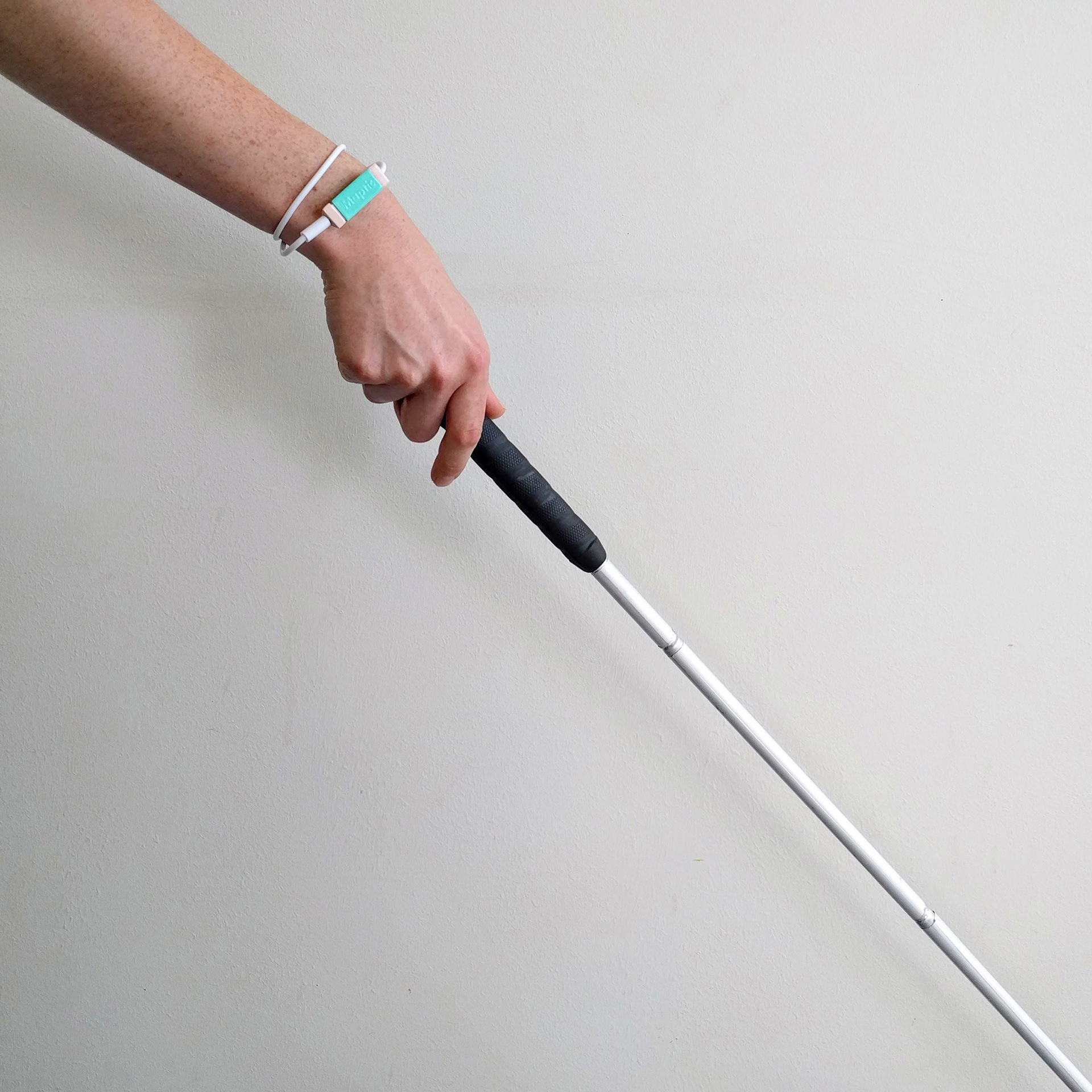
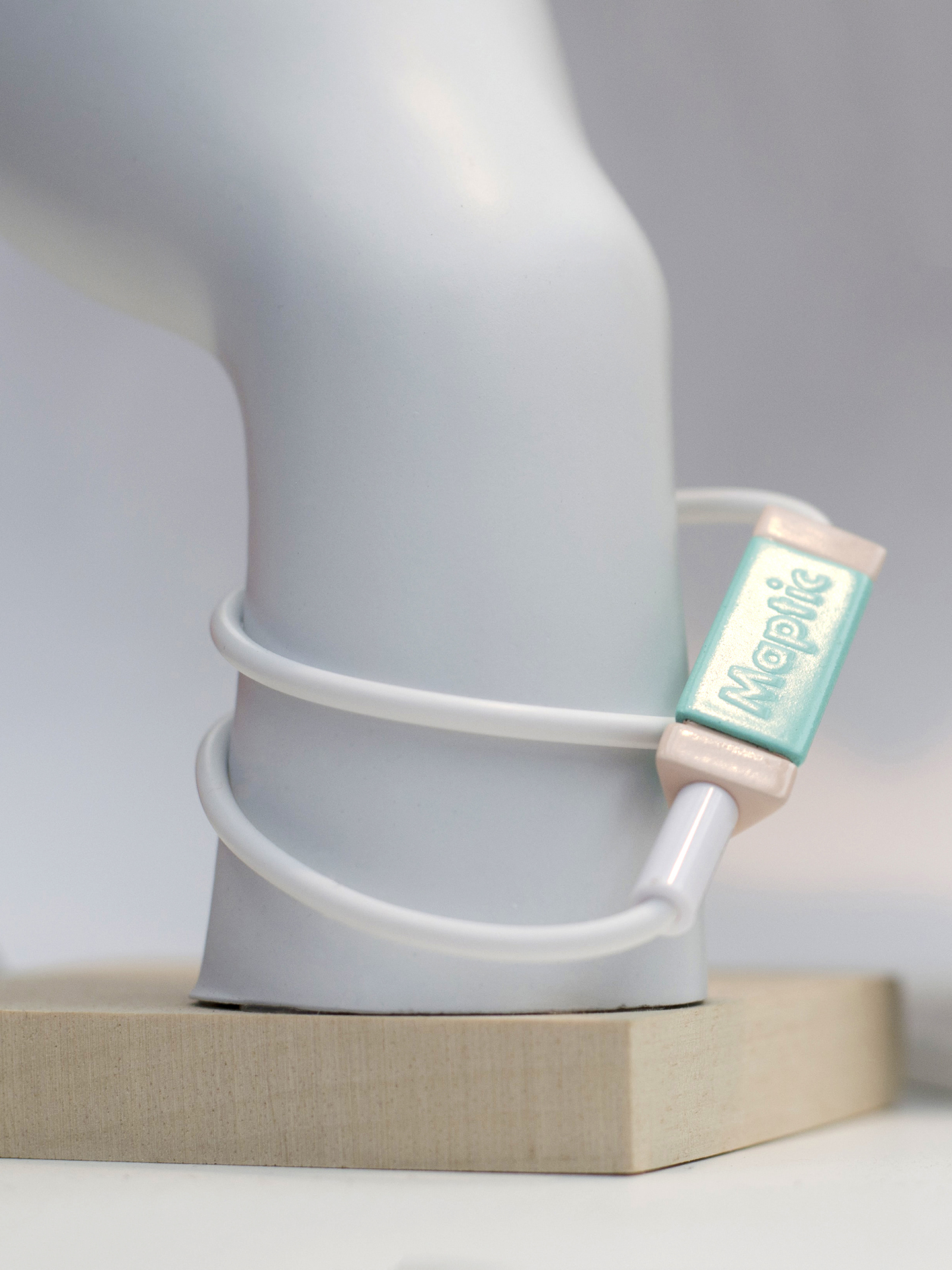
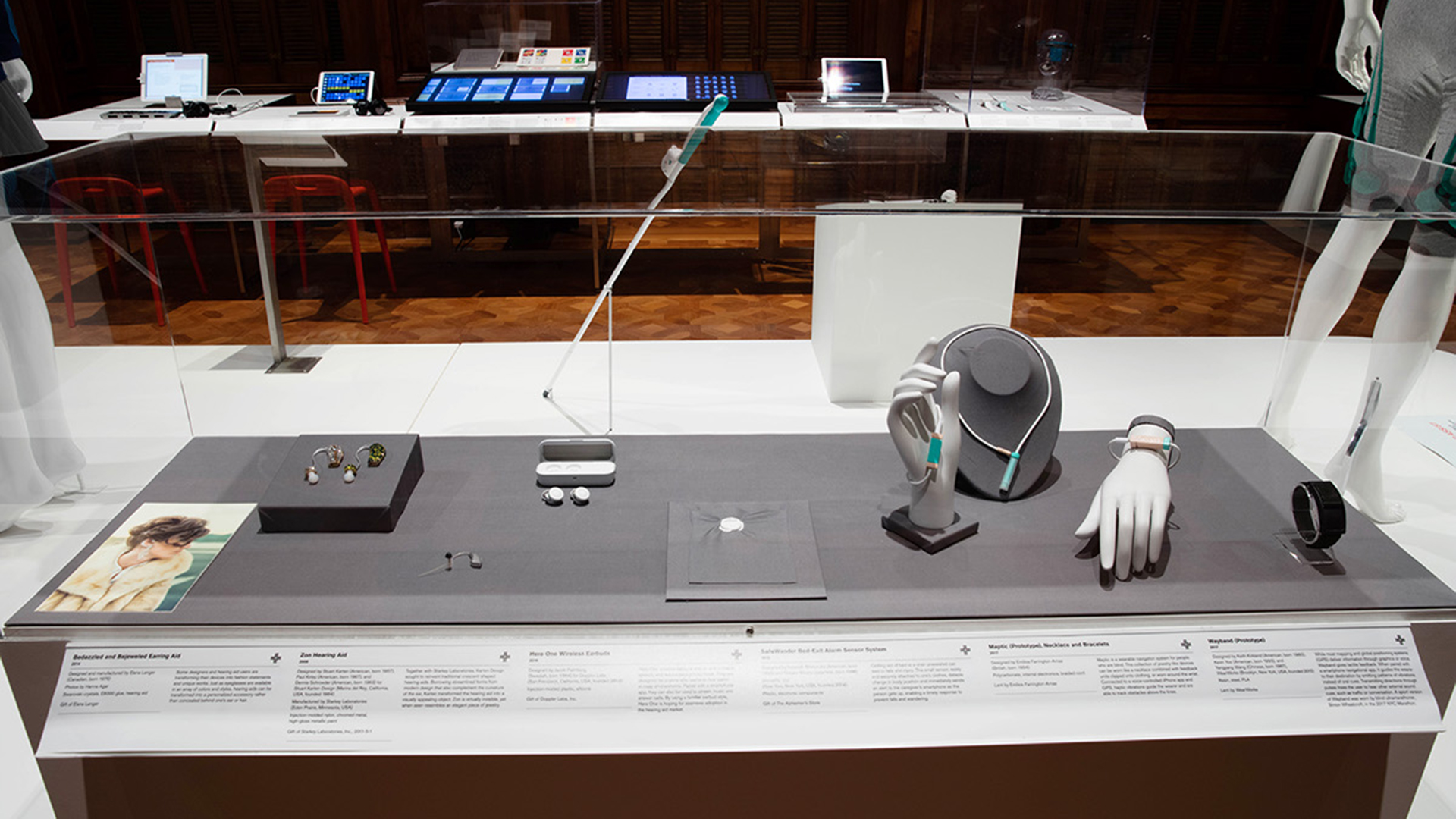
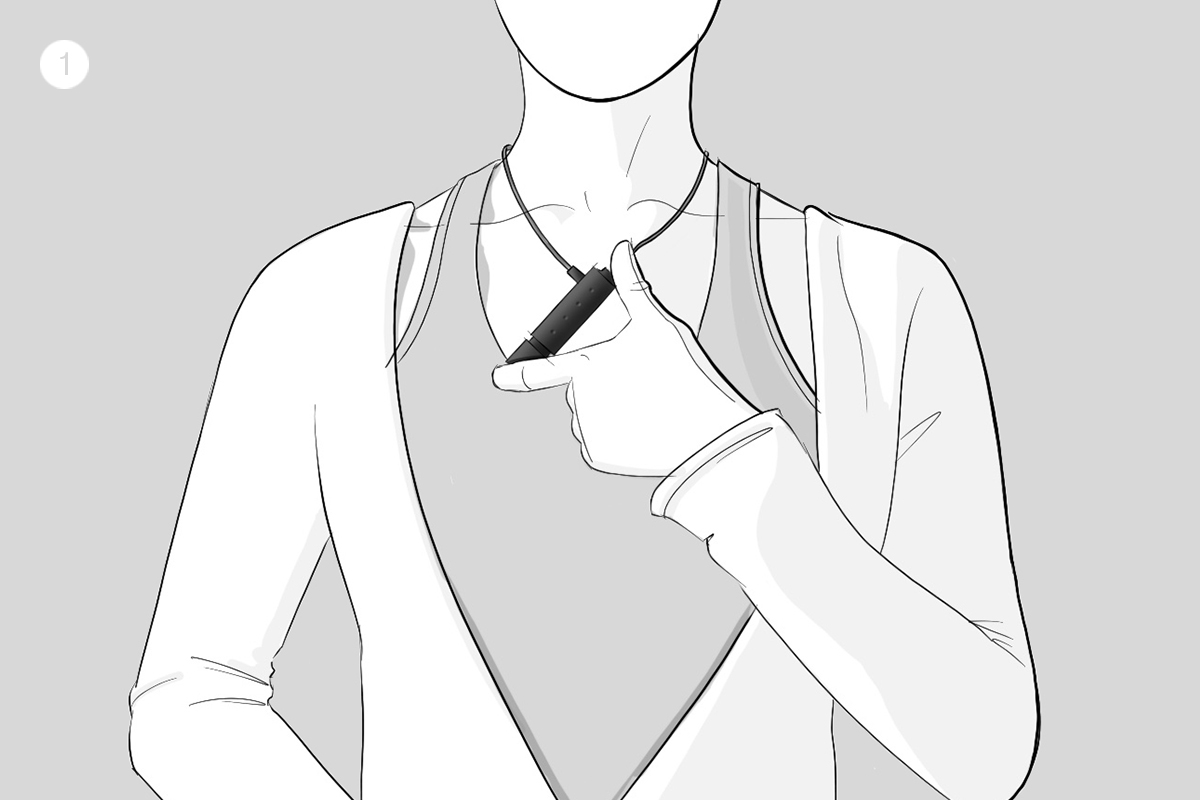
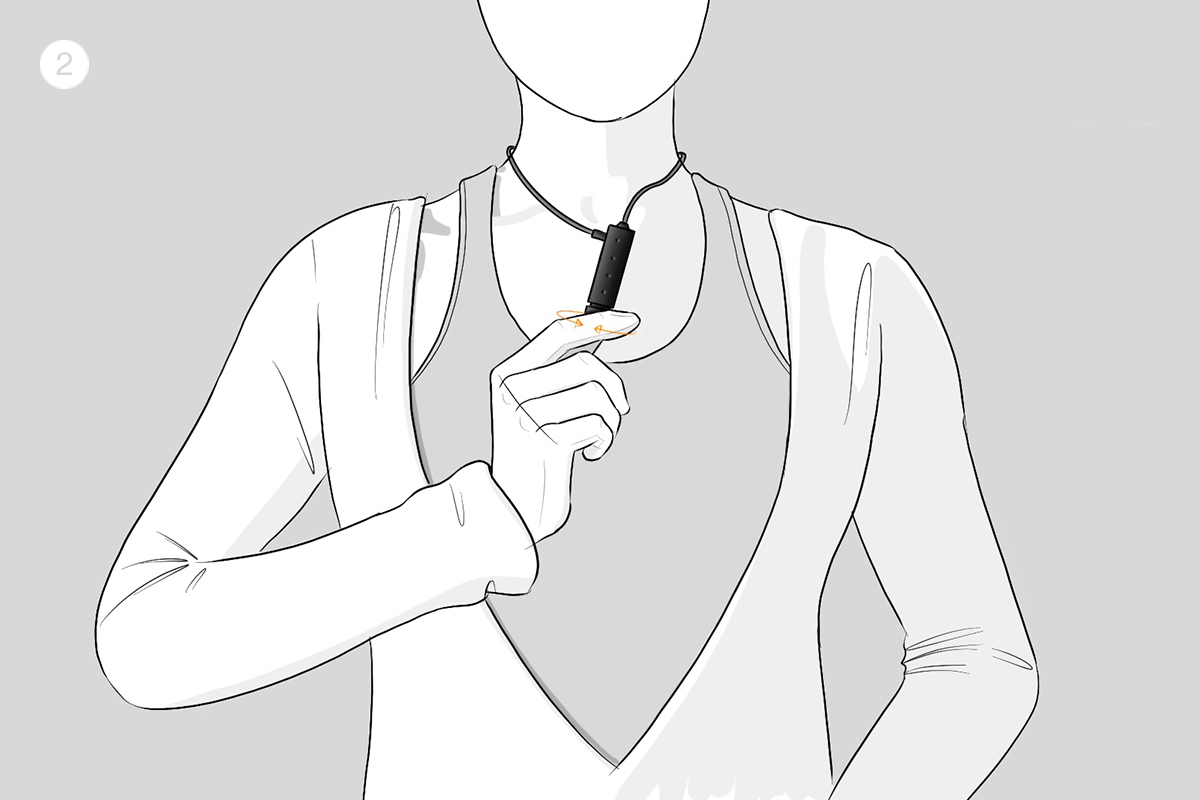
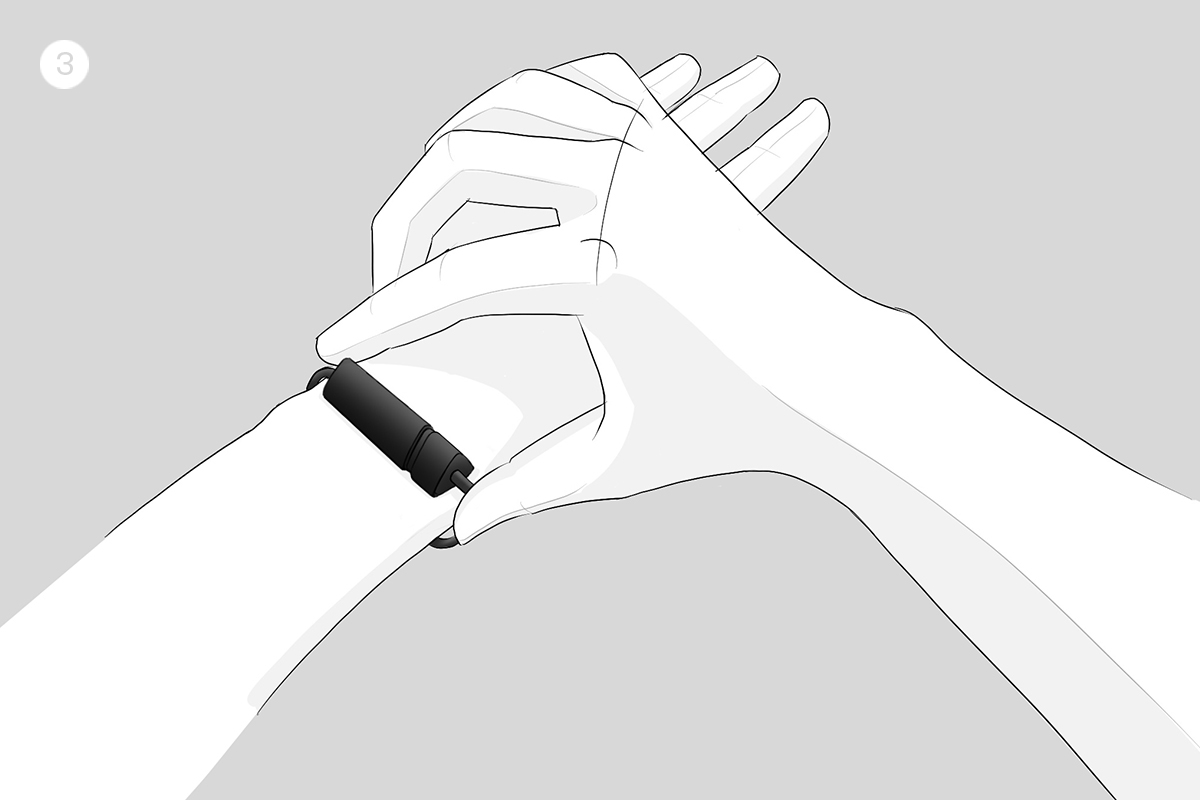



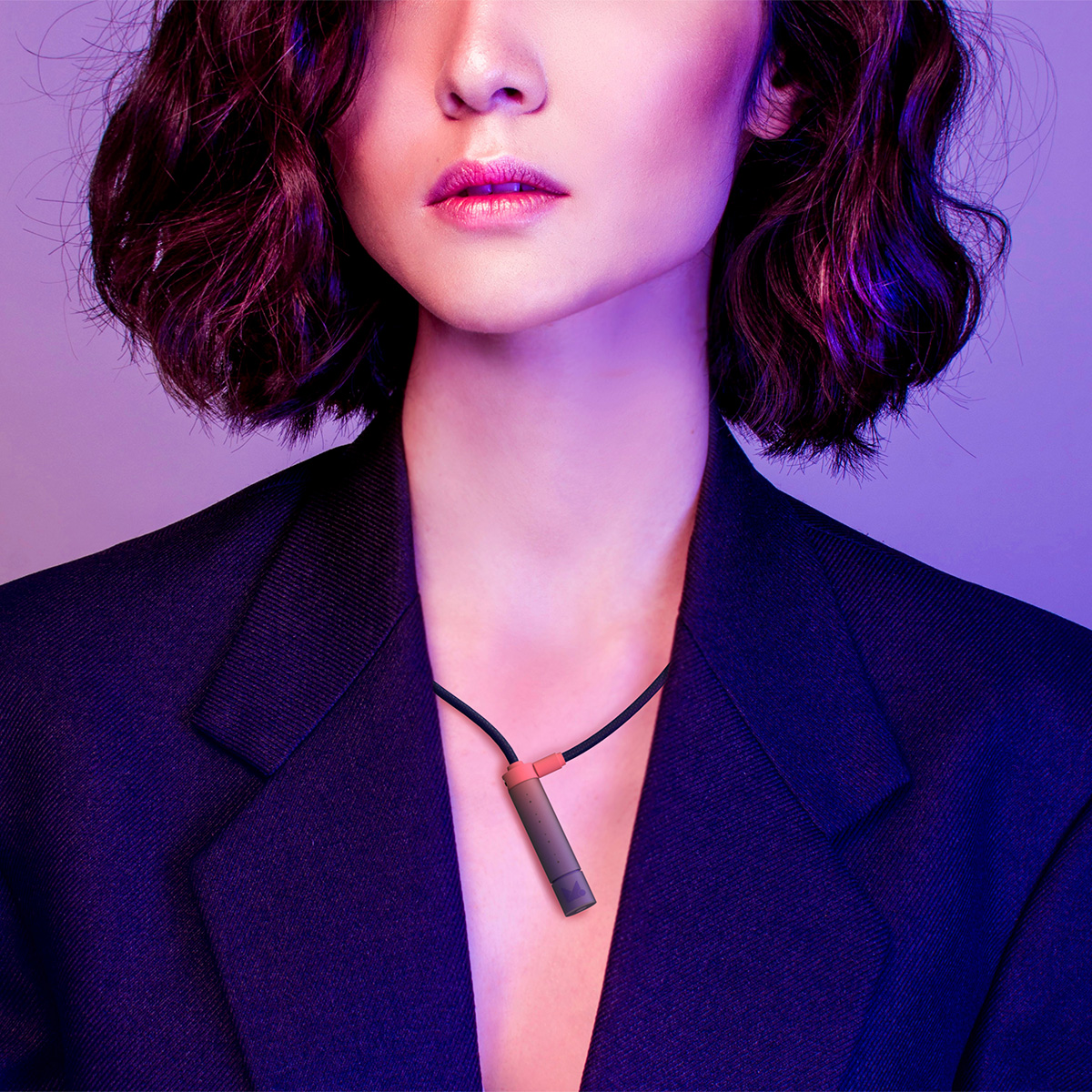
Inner workings
A compact form-factor
The internals were designed to be as compact and with the smallest silhouette possible. LIDAR sensors are small and require minimal power, so with utilising BLE chips and low-power microcontrollers, a comfortable days use at minimum can be expected, with an 80mah battery and charged via 3.5mm jack.
The internals were designed to be as compact and with the smallest silhouette possible. LIDAR sensors are small and require minimal power, so with utilising BLE chips and low-power microcontrollers, a comfortable days use at minimum can be expected, with an 80mah battery and charged via 3.5mm jack.
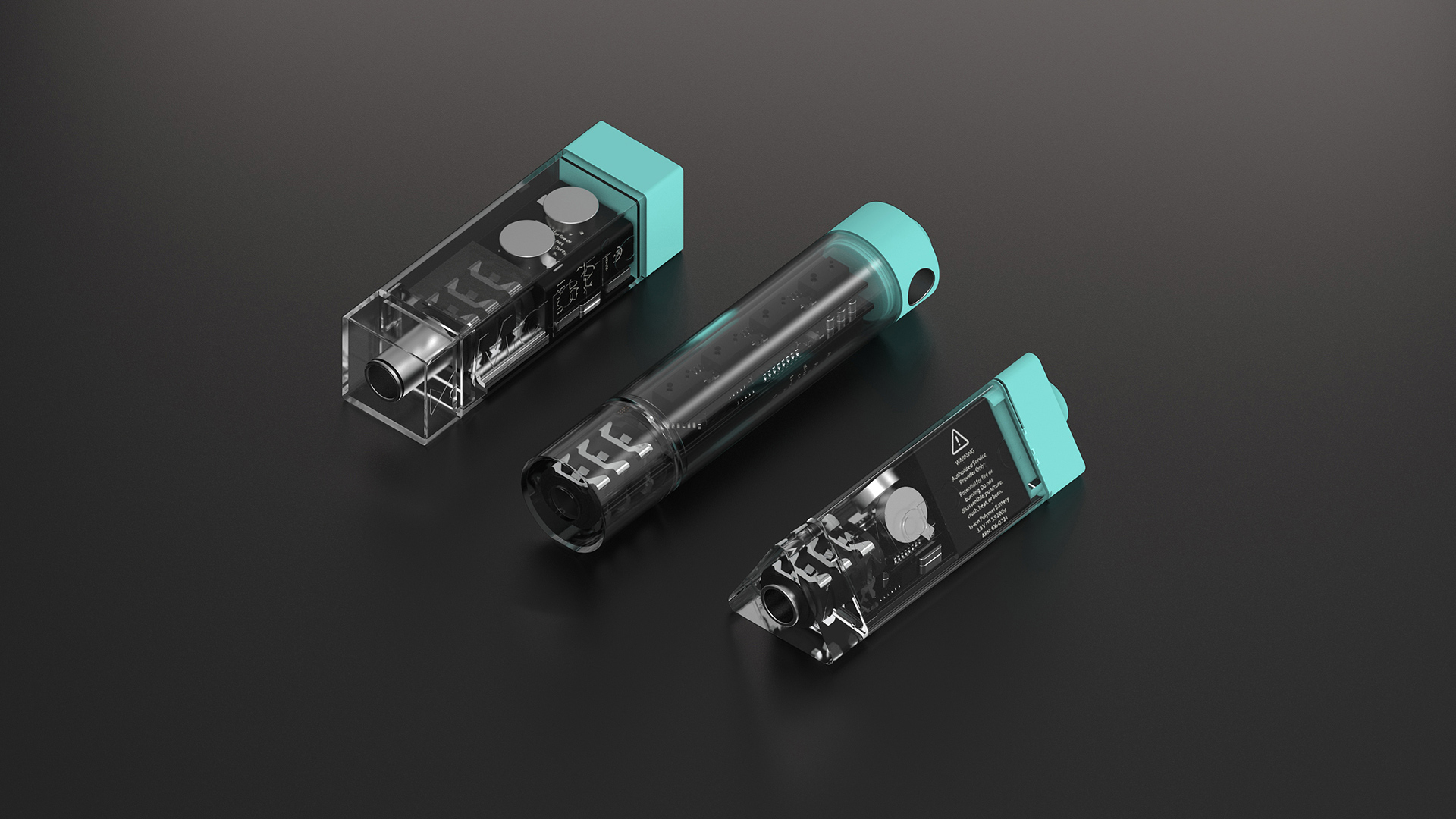
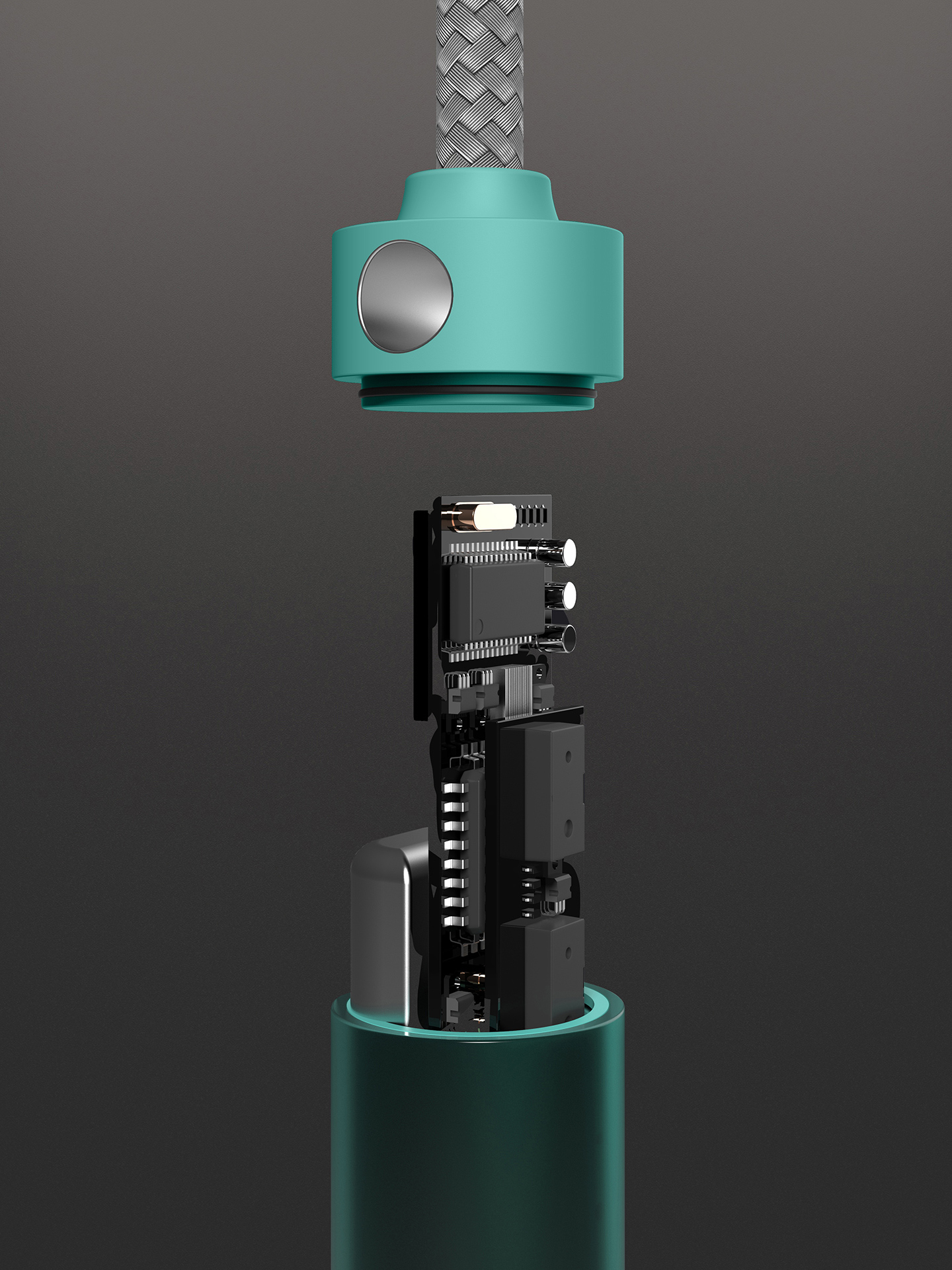

Turn-by-turn navigation
From A to B with a tap
Turn-by-turn navigation
From A to B with a tap
A major part of the project is turn-by-turn navigation, where the user can be directed to a destination via vibrations, not spoken word as is current. Instead of using an in-built GPS module into the circuitry, increasing the size of the units while decreasing battery life, it was chosen to link the Maptic units to a smartphone, using the current GPS capabilities of the phone and Google Maps API to provide the data for navigation.
A major part of the project is turn-by-turn navigation, where the user can be directed to a destination via vibrations, not spoken word as is current. Instead of using an in-built GPS module into the circuitry, increasing the size of the units while decreasing battery life, it was chosen to link the Maptic units to a smartphone, using the current GPS capabilities of the phone and Google Maps API to provide the data for navigation.
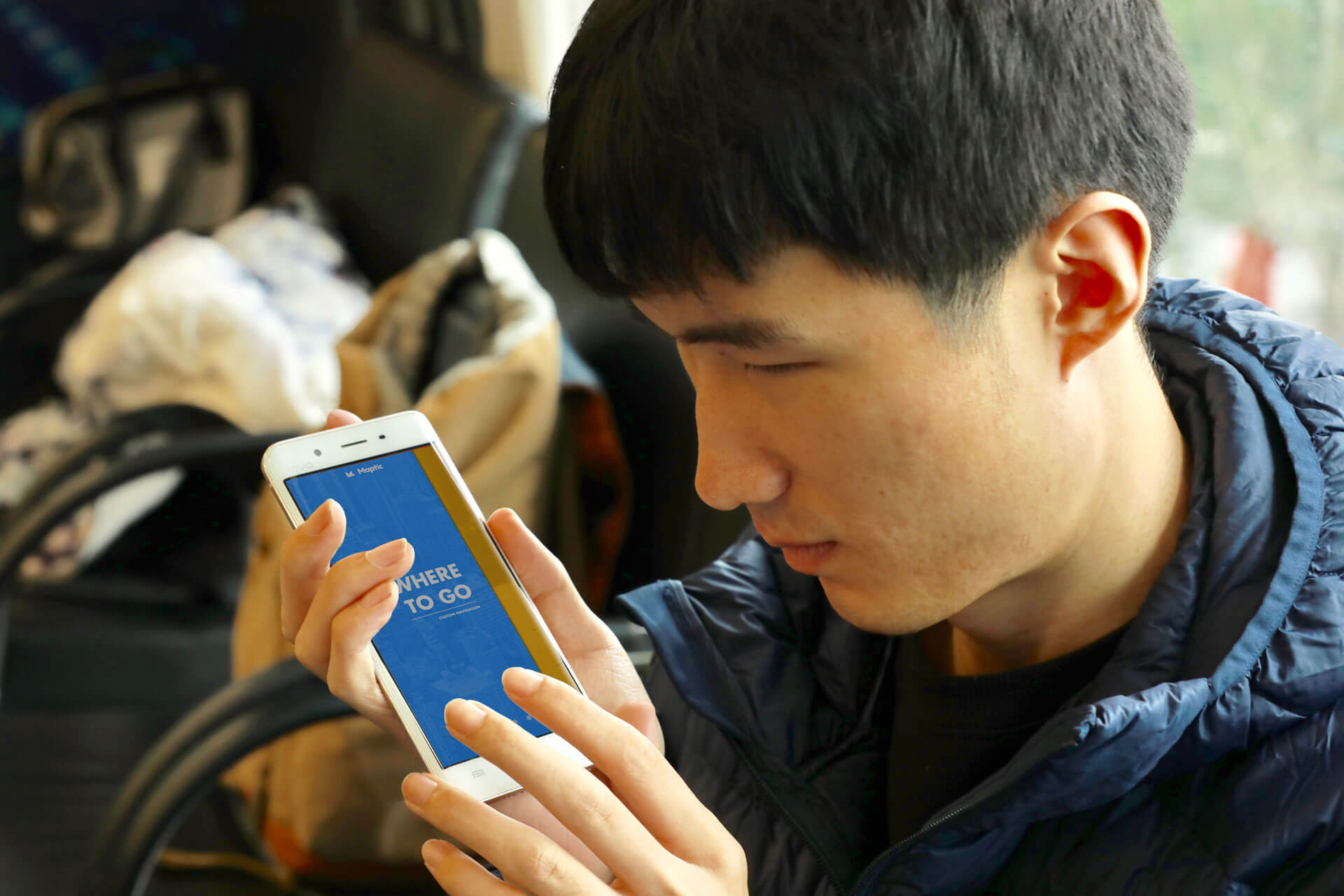
GPS Navigation app
Intuitive interaction
Current phone navigation is limited to visual or voice input and output. To combat this, a custom app was developed, utilising high-contrast colours and an easy gestural interface.
High contrast, vivid colours for those with partial sight
Large, swipe-controlled interface, no fiddly buttons
Each section is colour coded, no need to read text
Voice controlled input for those with full blindness
One tap to get home from anywhere, no input needed
All directions are given through unit vibrations

Getting from A to B
One tap
To make the interaction even easier for those with partial sight, the user can simply tap to go home, or a couple of swipes to a chosen destination. The app also allows the user to check on the status of the units, and if they are paired correctly. This allows the phone to be put away, removing the feeling of vulnerability.
To make the interaction even easier for those with partial sight, the user can simply tap to go home, or a couple of swipes to a chosen destination. The app also allows the user to check on the status of the units, and if they are paired correctly. This allows the phone to be put away, removing the feeling of vulnerability.
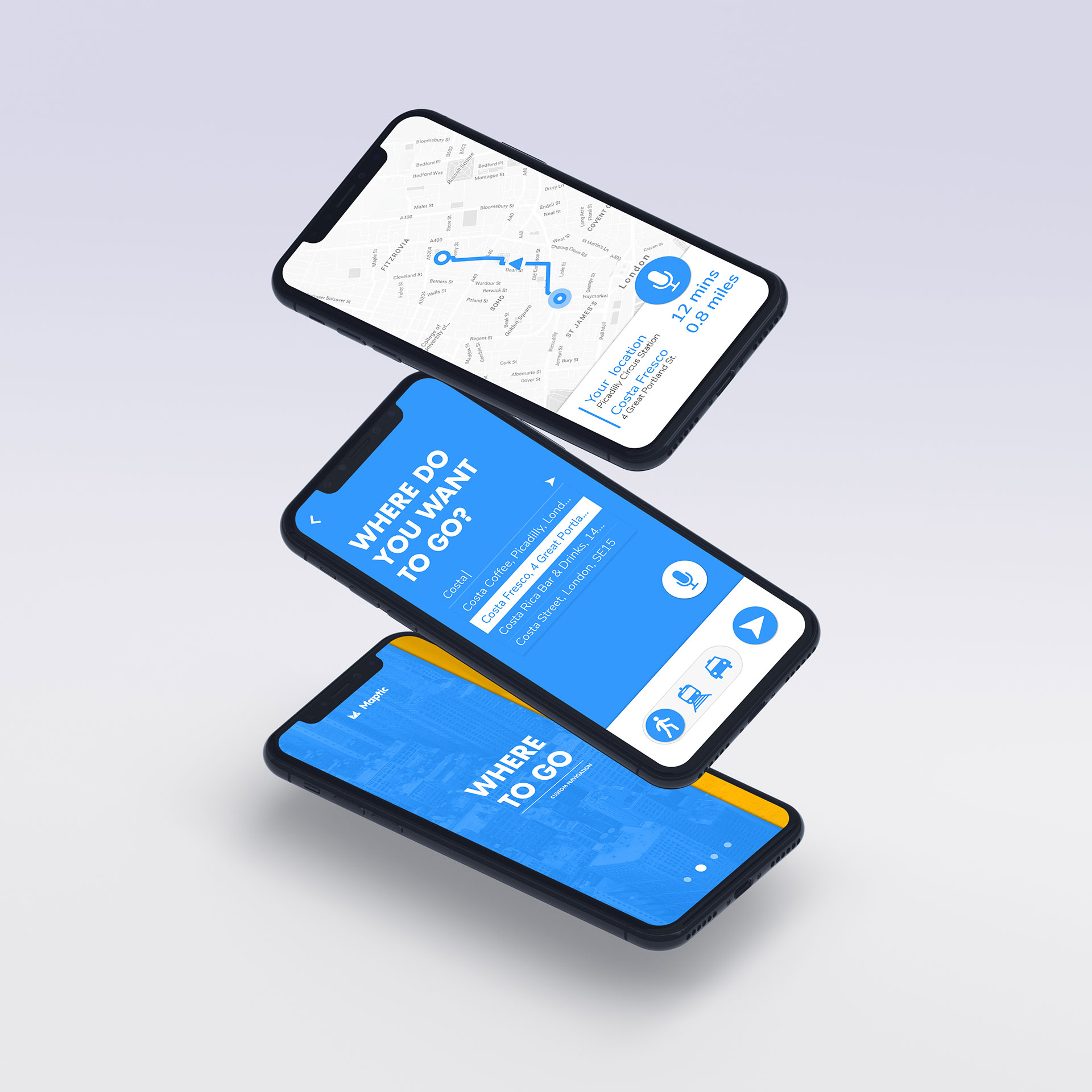
Featured
Architect - The journal of the American Institute of Architects. The premier site for architecture industry news and building resources for architects and architecture industry professionals.
Architectural Lighting Magazine - Industry news, design projects, products and technology for lighting professionals
Azure Magazine - Leading North American magazine specialising on contemporary design, architecture, products and interiors from around the globe.
Cooper Hewitt, Smithsonian Design Museum, New York - Displaying Maptic at the Access + Ability Exhibition in NY, following with an 18-month tour of the country.
Core77 - World-renowned magazine dedicated to Industrial Design.
CrackedIt - an online platform helping disabled people connect with each other and with makers, designers and engineers from across the globe to find and share fixes, tweaks and hacks.
Design-Inspiration.net - design inspiration in the field of product design, industrial design, crowdfunding, automotive, furniture design and technology.
Designboom - the first and most popular digital magazine for architecture and design culture. daily news for a professional and creative audience of half a million.
Dezeen - The world's most famous and influential design magazine bringing a carefully edited selection of the best design projects and news from around the world.
Di-conexiones - a Spanish design magazine, with a main objective to share information related to industrial design.
Experimenta Magazine - Spanish web magazine, encompassing all manner of experience design.
Fast Company - American business magazine that focuses on technology, business, and design.
Made in Brunel: Redefining [ ] - The accompanying 300+ page book to the Made in Brunel show. Includes Maptic, Ambient and Waterstones.
National Geographic - the official magazine of the National Geographic Society, one of the largest non-profit scientific and educational institutions in the world.
newdesign Magazine - Magazine that covers the products, innovations and processes of design in all its forms.
New Designers 2017 - Displaying Maptic at the exhibition, which contains the very best of the UK's design graduates. Also selected as KTN Highlight of show.
Path - Path is an award-winning, independent, design consultancy who specialises in strategic brand innovation and packaging design. Featured on their 'That's Interesting' page.
PSFK - New York-based media company for creative professionals in retail, advertising and product experience design.
Springwise - the original and most relevant digital source of current innovations and ground-breaking ideas from around the world since 2002.
Tek Crispy - technology magazine presenting technology, science and digital culture in a simple and clear way.
TrendHunter - the world's largest, most popular collection of cutting edge ideas, innovations and trends, fueled by 201,000 insatiably curious people.
Wareable - the only dedicated site to wearable technology and the connected self that's committed to helping people to get more from the things they love doing with wearables.
wwwhat's new - since 2005, site showcasing news about technology, marketing and the internet.
Brunel University - London based university, well-known for it's award-winning design courses.

© 2025 Emilios Farrington-Arnas